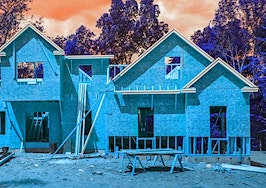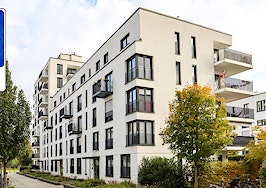Knowing a few basic construction principles will serve real estate agents well, making them feel more comfortable and more confident in showings. While it is not required that agents be experts, able to answer highly technical questions, it can make showing more interesting for both you and your buyer.
For example, after you have walked into a kitchen in a showing for the third time with the same set of buyers, it can become tedious as well as redundant to state, “This is the kitchen.” After all, the room has a stove, sink, fridge and hopefully a dishwasher — what else can it be?
Creating a dialogue with buyers about different types of construction and foundations can help you field questions and build your expertise. As each day is new in real estate, it is beneficial to have information at your fingertips.
As most houses in the U.S. are built on foundations below grade — either basements or crawl spaces — it is smart for agents to understand the pros and cons of each, and to understand the principle of a slab foundation.
What is a slab foundation?
Houses that are constructed without basements or crawl spaces are built on slabs, which are flat cement bases. Slab houses are economical to build as no excavation is necessary, eliminating the need for heavy-duty equipment, energy expenses, and transporting the soil removed from the basement to another location.
A slab foundation reduces the impact on the site. Cinder blocks and bricks are not required to support a slab house and only a cement floor or slab is poured, which can be achieved in one day. Building up, starting with a slab base, is less expensive than digging down to build a basement.
Foundations are typically determined by the type of house that is being built, the type of soil and ground conditions on-site, as well as the climate and part of the country where construction is taking place. Bedrock or solid ground is ideal for slab foundation construction. Sand and clay are less ideal, as are locations with excessively moist soil, or prone to flooding.
While slab foundations are quick to construct, they can last 50 years or more.
How slab foundations are made
Slab foundations — also known as slab on grade, or SOG — require prior coordination of plumbing, electrical, and sometimes heating, ventilation and cooling, (HVAC) which are installed on the building site before the slab is poured.
Slab houses are less flexible than traditionally constructed houses, which add plumbing, electricity and HVAC after the foundation is poured. Once the site is leveled, gravel or crushed stone is poured, and plumbing and electrical lines are laid.
Large trees near the building site may have roots which over time will negatively impact the foundation, just as they would affect a basement or underground pipes in a house, so it is best to remove any that are too close.
A cement truck comes next and pours the cement, which will dry and be ready for construction between seven and 28 days. Steel bars, or rebar, is added to the slab before the concrete sets. These steel rods add tensile strength, the result being reinforced concrete (also called reinforced cement concrete).
Myth: Slab houses are chilly
A common perception of slab houses is that they are cold. This not the case.
Slab foundations have been used in frigid Canadian and European climates for over 50 years and a newer, insulated foundation, a Frost Protected Shallow Foundation is currently used in Alaska.
Insulating the cement floor is mandatory and radiant heating installed in the cement guarantees warm interiors. Slab on grade foundations require skirt insulation that protects the perimeter of the slab, guaranteeing it will never be subjected to freezing.
Vertical rigid insulation around the outer edges of the slab that extends to the bottom of the foundation walls preserves warmth. A “wing” of rigid insulation that extends out from the foundation two to four feet also protects the structure from cold. The straight perimeter of the house loses less heat to the corners, so more insulation is required at corners to ensure warmth.
Moisture in the soil can freeze when temperatures drop, resulting in ice crystals underground. The frozen water expands, and ice “heaving” is the result. Slab foundations that are not insulated can be damaged by ice heaving, which is why slabs were not used in colder climates in the past. Modern insulation and waterproofing materials have prevented ice from damaging slabs so that they can be used in all climates.
Slab foundations have evolved over time to be energy efficient, economical and environmentally conscious. In the future, with the advanced waterproofing and insulation options available, slab foundations will be used more frequently and effectively than in the past.
Gerard Splendore is a licensed associate real estate broker with Warburg Realty in New York. Connect with him on LinkedIn.













